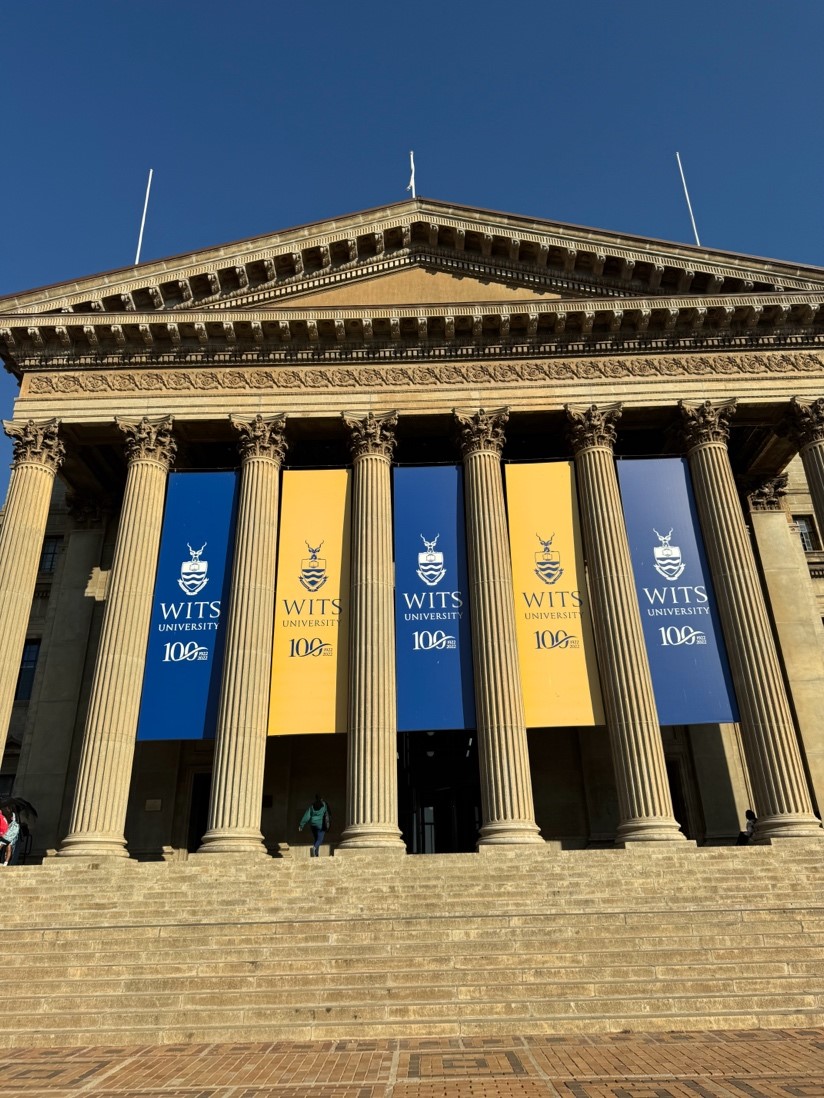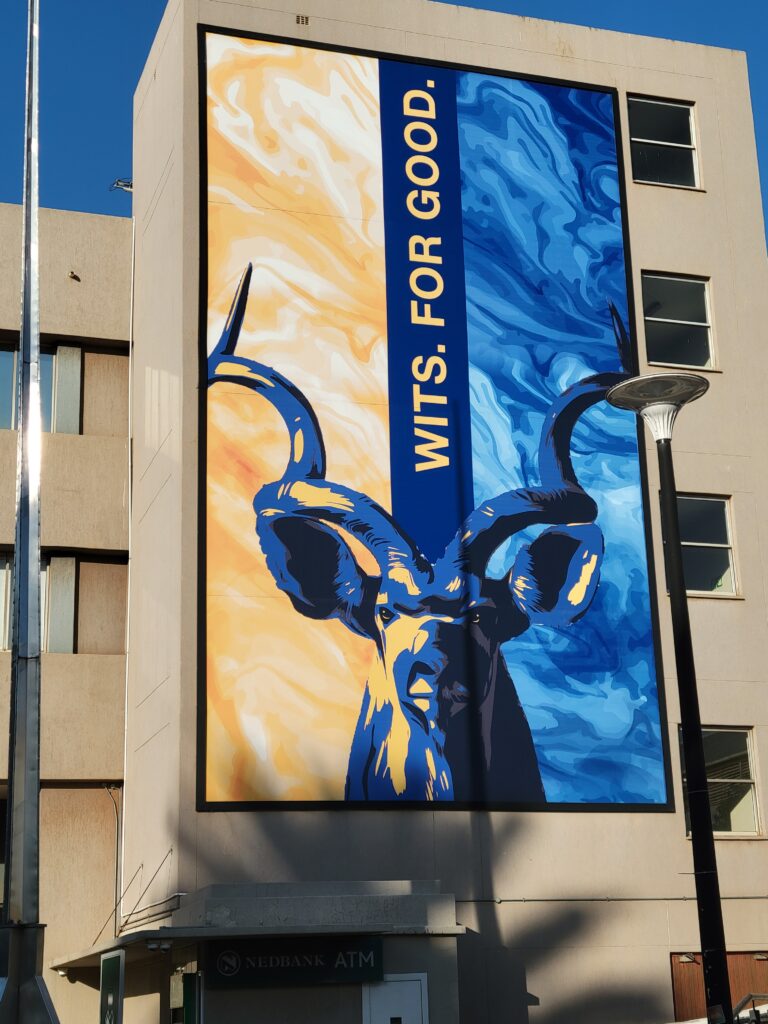
Shortly after landing in Johannesburg on May 21, we visited the University of the Witwatersrand, or as we came to call it after visiting with various faculty and staff there, “Wits”. Wits is currently ranked as the #2 institution in South Africa, a research intensive university that has deep rooted historical connections with the mining industry as well as political activism.1
During our visit, we met with a panel of faculty and staff before heading off on a tour of their beautiful campus. The faculty panel included Moses Pieterse (Manager of International Projects), Professor Nicole De Wet-Billings (Senior Director of Academic Affairs), Ms. Carol Crosley (University Registrar), Ms. Sarona Makwana (Head of the Student Enrollment Centre), Mr. Jerome September (Dean of Student Affairs), Mr. Tsegofatsio Mogaladi (Deputy Dean of Student Affairs), Professor Emmanual Ojo (Associate Professor of Educational Leadership, Policy, and Skills), and Ms. Zena Richards (Manager of Student Affairs – First Year Experience). The topic of the panel was “University efforts to diversify faculty, curriculum, and the student body”.
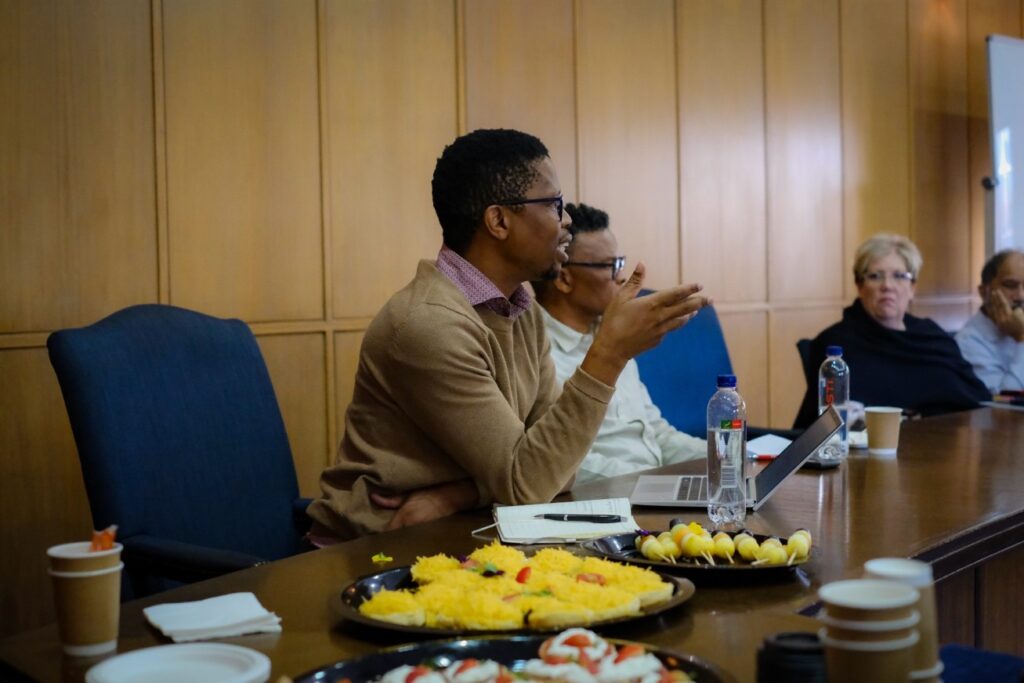
At the top of the panel, the registrars discussed Wits’ major changes in terms of the diversification of both their student body and faculty. One panel member reflected on his time as a student at Wits during apartheid, where he recalled only about 4 Black faculty members and about 35 Black students out of almost 16,000 in total. While Wits was one of the only universities to continue admitting students of color during apartheid, there were very few and the environment could be hostile for those that did attend. Contemporarily, as the registrars shared with us, the school hosts about 40,000 students, 24,000 of which are undergraduates. Recent student populations have been about 84% Black and 9-12% White, closely reflecting the demographics of the broader South African population. They also currently enroll more female students than male, which shifted from a population that was previously 65% male. Additionally, they have a strategic focus on expanding both their international and graduate student populations.
To maintain this diversity, the university selects purely based on academics; only the Health Sciences programs have an admissions policy that considers race or gender. Beyond simply achieving diversity in their population, Professor Ojo discussed how Wits has been very intentional to center transformation and social justice, reflecting the language of other institutions we had visited. While debriefing on our experiences throughout the trip, our group was impressed by the alignment in language and purpose of the different institutional missions, which seemed to reflect a broader national agenda in post-apartheid South Africa.
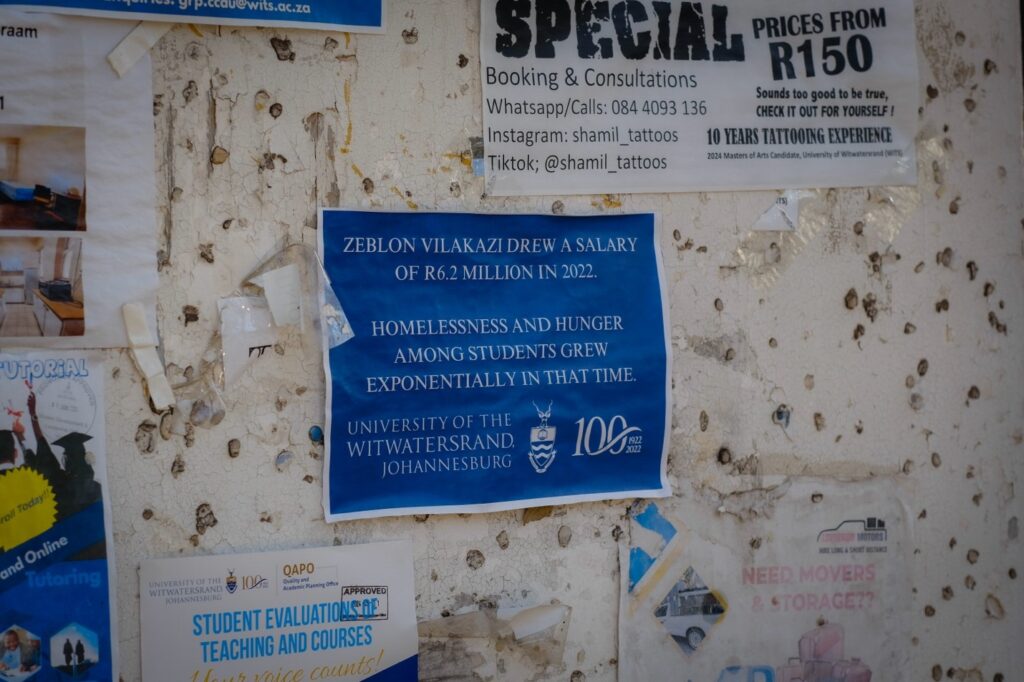
One major element of Wits’ transformation strategy is the large financial supports they provide to students. The panel shared with us that over 65% of their students do not pay tuition or fees to the institution. However, as we discussed during this visit as well as others, there are still many additional financial costs to a university education including food and housing that restrict access to higher education for a large portion of South Africa’s population. While the university has been intentional about mitigating these financial burdens through initiatives such as free meal service, access to technology, and housing assistance, it is still a challenge many of the institutions and their students are facing.
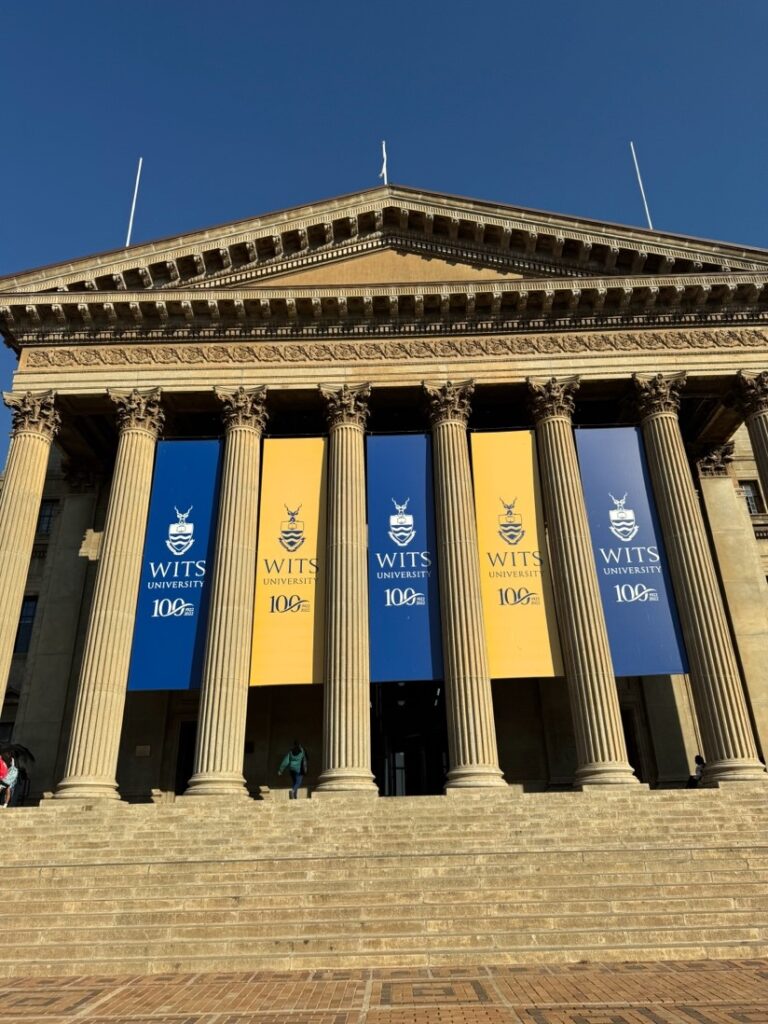
The Fees Must Fall movement called for free education for all students, following Wits’ announcement that student fees would increase 10.5% in the next academic year alone. It took just two days of student protests before university leaders agreed to suspend fee increases and engage in discussions with their students. However, this was not the end of the movement, which had a resurgence the next year in 2016 when the South African government declared that a freeze on fee increases was not sustainable, ultimately leading to further protests that were met with police violence both at Wits and other institutions across the nation. The impact of the Fees Must Fall movement continues to remain strong today in South Africa, as universities continue to announce fees increases and students continue to stand against it.2 The Wits panel discussed their pride in their students, describing Wits as a synonym for activism, an institution that tries to listen to rather than silence student voices.
The staff and faculty also discussed their strategies for setting students up for success after graduation amidst the context of an unemployment crisis in South Africa. Around 35% of the country’s young adult population (18-34) are currently unemployed due to the lack of available jobs.3 Thus Wits has focused on developing their Counseling & Career Development unit, including an initiative known as the Journey to Employability and Economic Engagement. They believe digital transformation is at the heart of preparing students for employability and are also working on introducing a compulsory course on entrepreneurship. These efforts have resulted in 75% of their graduates obtaining jobs and/or pursuing further studies within 3-6 months after graduation, a number they intend to continue raising.
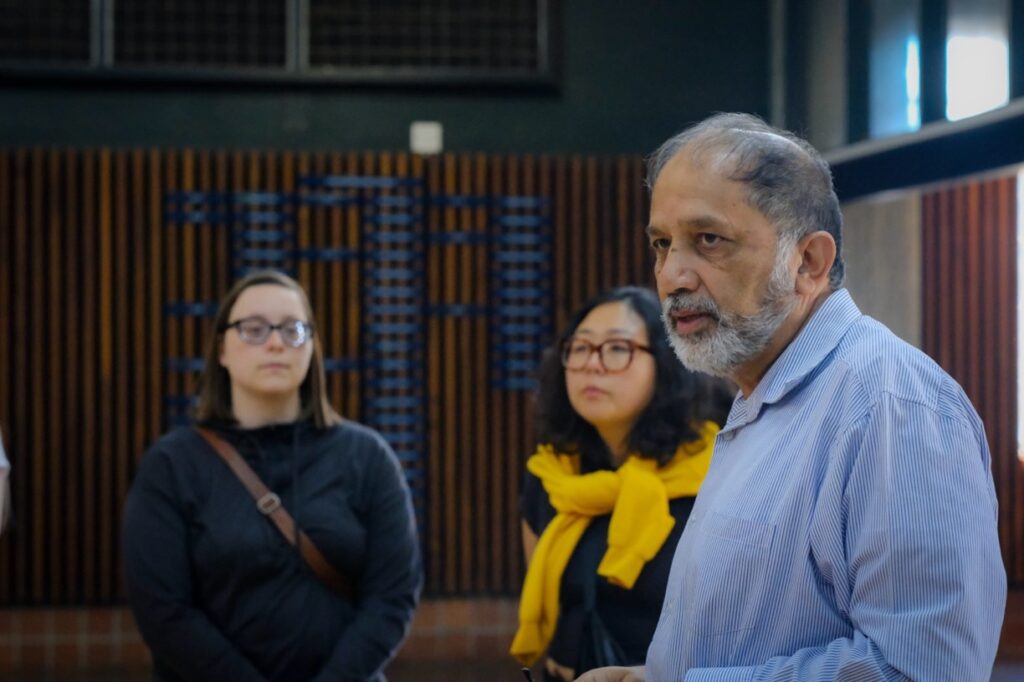
Clearly, Wits is working on some essential efforts to support their diversified student population in an institutional structure that was built for a historically white clientele. At this stage, they are proud of the levels of access they have achieved thus far, but the challenge continues to be student success beyond access. In a time when the majority of the students across the South African system of higher education are first-generation students whose lives continue to be marred by the aftershocks of apartheid, there is still work to be done. Students continue to need greater socioeconomic, academic, and mental health support from their institutions, as we often heard acknowledged. But the country is moving in the right direction, and the many institutional actors we met with are making great strides in their work towards the educational transformation agenda.
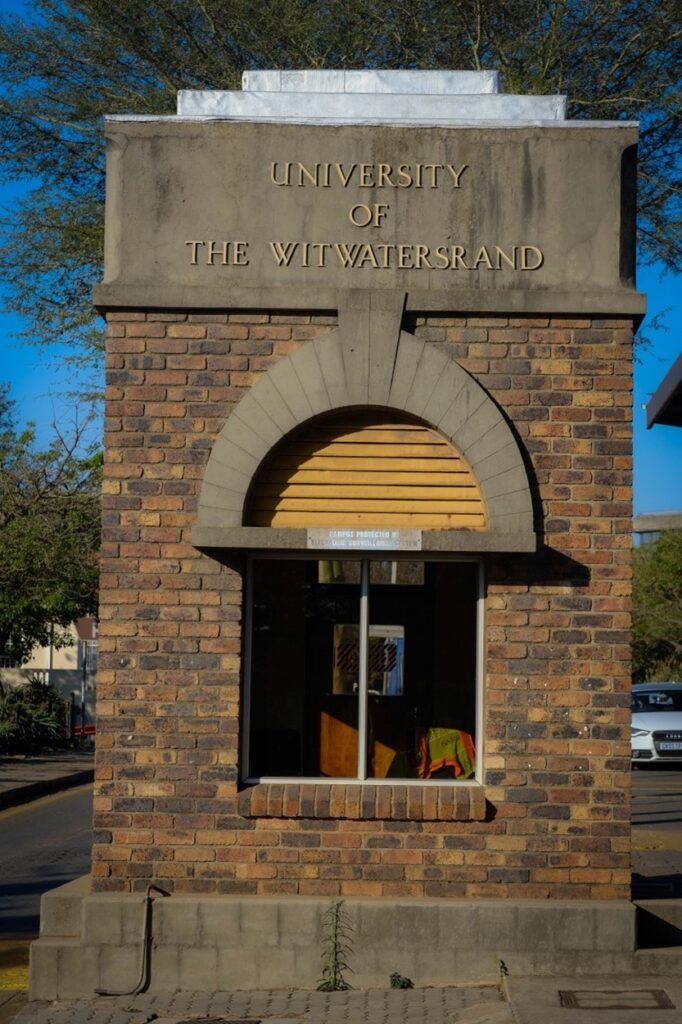
I think this theme of student success beyond access that arose again at Wits University resonated with many of us as we reflected on the similar challenges we face in the U.S. system of higher education. There were many moments where we felt in awe of how familiar some of these discussions felt, despite us being halfway across the world. Yet at the same time, we were cautioned during our visit at Wits about making direct comparisons between the South African and United States contexts, a reminder which struck many of us as we tried to reconcile the new knowledge we were gaining with our existing knowledge that has been heavily influenced by western perspectives on higher education. I know I am personally still reflecting on the many ways in which I hope to use this experiential study experience to inform my own work in higher education. But I think I speak for our entire group when I express our gratitude to the University of the Witwatersrand for welcoming us onto their campus and bringing together a knowledgeable group of staff and faculty to share both their successes and challenges. The information and relationality we received from Wits contributed to the larger experiential study experience that shifted so many of our perspectives in a way I believe has changed all of our paths forward in life in a significant way.
References:
- Wits University. (n.d.). Retrieved June 24, 2024, from https://www.wits.ac.za/
- South African students demand zero percent fee increase #Feesmustfall 2016 | Global Nonviolent Action Database. (n.d.). Retrieved June 24, 2024, from https://nvdatabase.swarthmore.edu/content/south-african-students-demand-zero-percent-fee-increase-feesmustfall-2016
- South Africa’s unemployment rate climbs weeks before election | Reuters. (n.d.). Retrieved June 24, 2024, from https://www.reuters.com/world/africa/south-africas-unemployment-rate-rises-329-first-quarter-2024-05-14/
–by Hayley Nielsen, CSHPE doctoral student, with photos courtesy of Dr. Charles H .F. Davis

